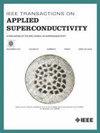Challenges and Perspectives of the Superconducting Magnets for the Muon Collider Storage Ring
IF 1.7
3区 物理与天体物理
Q3 ENGINEERING, ELECTRICAL & ELECTRONIC
引用次数: 0
Abstract
The International Muon Collider Collaboration (IMCC) has been formed with the aim of delivering a feasibility study on a Muon Collider facility, as recommended by the European Strategy for Particle Physics and supported by the European Union through the Grant Agreement 101094300. Such facility would allow to study frontier physics with a 10 km collider ring and a muon center of mass energy of 10 TeV. Several technical challenges arise due to the short rest lifetime of these particles (2.2求助全文
约1分钟内获得全文
求助全文
来源期刊

IEEE Transactions on Applied Superconductivity
工程技术-工程:电子与电气
CiteScore
3.50
自引率
33.30%
发文量
650
审稿时长
2.3 months
期刊介绍:
IEEE Transactions on Applied Superconductivity (TAS) contains articles on the applications of superconductivity and other relevant technology. Electronic applications include analog and digital circuits employing thin films and active devices such as Josephson junctions. Large scale applications include magnets for power applications such as motors and generators, for magnetic resonance, for accelerators, and cable applications such as power transmission.
 求助内容:
求助内容: 应助结果提醒方式:
应助结果提醒方式:


